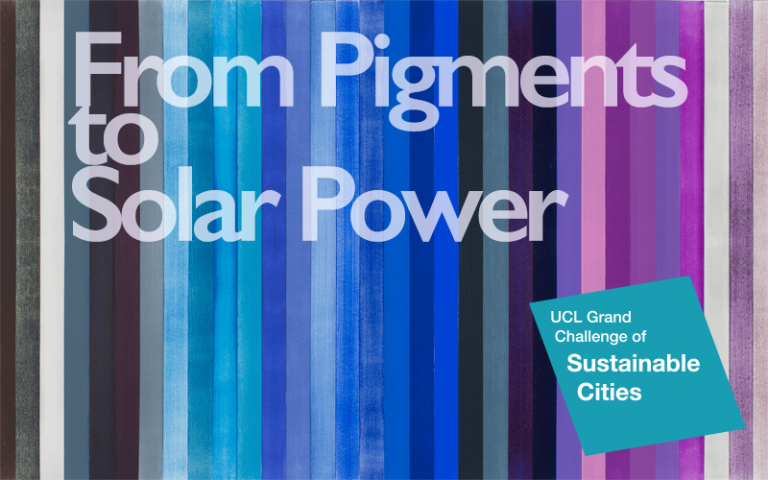From Pigments to Solar Power
From Pigments to Solar Power was a collaboration between chemistry, geology and art at UCL. It aimed to increase our understanding of sustainable materials for solar cells.

1 August 2015
Dr. Hugo Bronstein (chemist) and Dr. Ruth Siddall (geologist and pigment analyst) together with Onya McCausland and Jo Volley (Slade artists) have explored the potential for solar power within the colour indigo.
Materials such as indigo, which can effectively be ‘farmed’, could allow for the production of much cheaper solar panels. Furthermore, because indigo is an ‘organic’ compound (chemists use this term for anything that is made up predominantly of carbon and hydrogen) it tends to be lightweight and flexible meaning that large solar panels could be produced very cheaply. It is tempting to think of a scenario where people would farm indigo, which could then be used to generate electrical power cleanly and cheaply.
"Every science touches art at some point—every art has its scientific side."
Armand Trousseau 1801-1867
The final results of the venture are included in a small publication, which comprises a celebration of creative thinking as well being as a thing of beauty, and very much in the spirit of the interdisciplinary and imaginative research that is part of the tradition of UCL.
During the process, the project team consulted with The WoadCentre, Norfolk and also the expertise and laboratories at ColArtInternational Holdings.
 Close
Close

